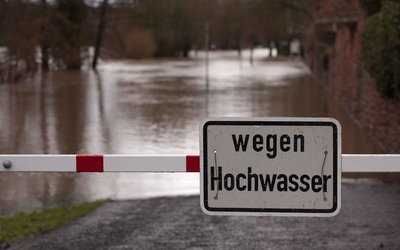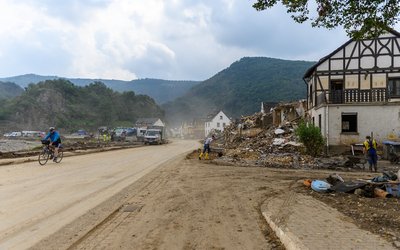Flash floods and urban flooding
Copenhagen pluvial and coastal flood risk now and in the future
October 13, 2015

The 2011 flood
In Denmark, the need for rapid reaction has been exacerbated by a large increase in the number of extreme precipitation events. These events have resulted in pluvial flooding in most major cities in Denmark during the last 10 years. One of the largest of these storms hit the capital city of Copenhagen on 2 July 2011. During this event, precipitation intensities higher than 2000 year return periods were recorded at the most critical locations. The damage to the city was substantial; insurance companies reported that > 30 % of building owners in the municipality of Copenhagen filed insurance claims after the event, and the total claims exceeded 800 million euros.
Future scenarios
Climate change impacts on urban flooding in Copenhagen have been assessed for two high-end scenarios of climate change (6°C global warming scenario in 2100 and the so-called RCP8.5 scenario). Both flooding due to sea surge and rain (cloud bursts) has been assessed.
Between now and 2100 flood risk (in terms of expected annual damage) is likely to increase strongly when no adaptation measures are taken. The projected increase is more than 2 orders of magnitude for sea surge and almost 4-8 times for pluvial flooding. However, significant autonomous adaptation is likely to occur. Copenhagen has developed an adaptation plan to pluvial flooding that makes the urban areas more robust and reduces the risk of flooding under the current climate to a very low level. Under a moderate scenario of climate change (the so-called IPCC A1B scenario), the adaptation plan reduces flood risk in 2100 to 0.2−0.3 times the current flood risk (in terms of expected annual damage). Under the high-end scenarios, flood risk in 2100 is 0.6−2.1 times the current risk.
Severe storms with intensities corresponding to what was observed during the event in Copenhagen on 2 July 2011 could occur approximately every 40 years in 2100 under a high-end scenario of climate change.
Adaptation plan
After the major storm in July 2011, a very ambitious climate change adaptation plan was developed for urban pluvial flooding in Copenhagen: (1) All basements should be disconnected from the public sewer system and/or private non-return valves installed to ensure that basements cannot be flooded by sub-surface flows; (2) City planning or local initiatives will ensure that up to 10 cm of water can run on streets and other surfaces without damaging the urban fabric, (3) A level of 10 cm of water on streets must not occur more frequently than 1 in 100 years in 2110.
The adaptation plan will change the urban layout in more than half of the total area of the city by changing the city layout to either store higher water volumes or convey water faster. The concept of allowing 10 cm of water to flow on most streets without causing damage is challenging because of other critical functions of the city, notably ease-of-access for disabled people and flow of traffic.
It will take several decades to implement the plan even under the most optimistic circumstances, and it remains to be seen whether the political awareness will remain high if the frequency of extreme precipitation becomes relatively low at some future point in time. If the plan is fully implemented, the Copenhagen region will be well protected even in a high-end scenario.
Source: Arnbjerg-Nielsen et al., 2015. Climate Research 64: 73-84.
Photo: RobinTphoto (www.flickr.com)








